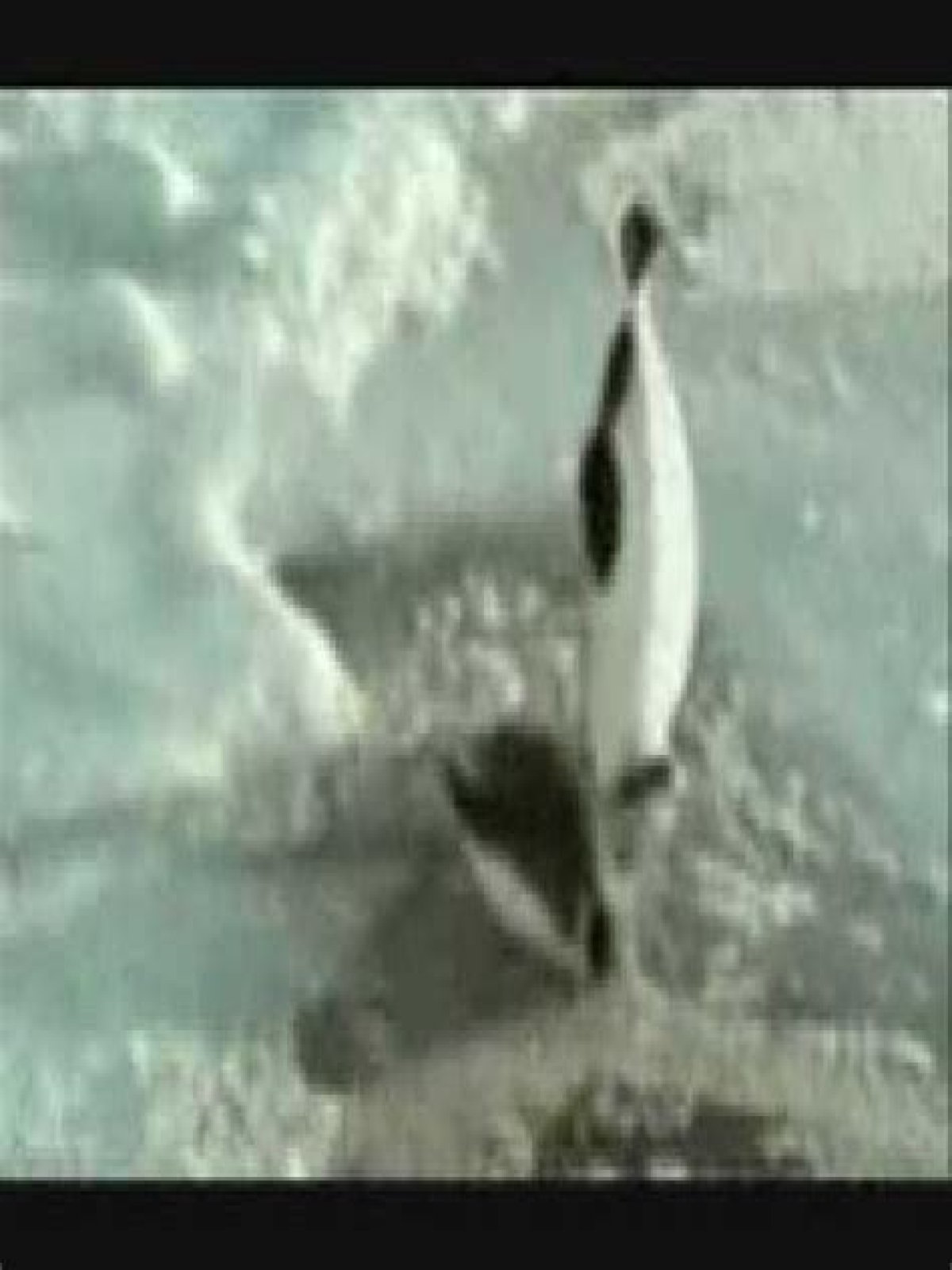They can’t fly through the air but they can fly underwater. In other words, a penguin uses the muscles in its chest to bring its special wings, called flippers, downwards. But then it uses the muscles between its shoulders to bring its flippers upwards.
Do penguins swim in water?
Penguins swim underwater at speeds of up to 15 to 25 miles per hour . As adept swimmers, penguins spend a lot of time in the water. Some penguins spend up to 75 percent of their lives in the water. Like other birds, penguins do lay eggs and they raise their chicks on land.
What do penguins do underwater?
Penguins swim most efficiently in deeper water levels, but sometimes it may be necessary to swim at the water’s surface. Some species of penguins use a breathing and swimming technique called porpoising, named after porpoises and dolphins. The birds come up for air, then inhale and exhale rapidly.
Why did penguins stop flying?
Why did penguins stop flying? According to a study, penguins evolved as flightless birds when their wings became more efficient for swimming and eventually lost their ability to lift penguins off the ground. The penguins’ bones also thickened over time, making them more suitable for swimming.
Can penguins fly yes or no?
Penguins can’t fly through the air, but they can fly through the water.
How do penguins learn to swim?
Unlike seals, penguins learn to swim without their parents and these started off paddling in the shallows. Some of the less adventurous types mis-timing the waves and suddenly getting about two inches of water over their feet would turn round and run back up the beach flippers outstretched in considerable horror.
How do penguins see underwater?
Penguins have evolved a flattened cornea which refracts light less strongly then ours and strong eye muscles that can change the shape of the lens allowing for sharper vision underwater. These adaptations allow focus in air and in water!!! This rockhopper penguin can see well underwater and on land!
How long can a penguin be underwater?
New research has revealed how the Emperor Penguin is able to dive to depths of over 500m and stay under water for up to 27 minutes – deeper and longer than any of its fellow avian species.
Do penguins push each other in the water?
No, they definitely do not do this, although it may look that way to the casual observer. What happens is that penguins like Adelie Penguins congregate at the water’s edge – and despite their marvellous adaptations for a life in water, they can often appear reluctant to enter it.
What is adaptation of penguin?
Adaptations in Penguins
➢ They have thick skin and a thick layer of fat below their skin which protects them from extreme cold. wings and webbed feet which make it a good swimmer. This adaptation helps penguin to catch fish as prey. ➢ They live together in large numbers and huddle together to keep themselves warm.
What are 5 adaptations of a penguin?
Penguins are well designed for obtaining food and water, swimming and keeping warm in the sea. Heavy, solid bones. These act like a diver’s weight belt, allowing them to stay underwater.Paddle-like flippers. Short wedge-shaped tail. Strong legs with webbed feet. Long thin bill. Special feathers. Blubber. Salt glands.
How do penguins hydrate?
The supraorbital gland, located just above their eye, filters salt from their bloodstream, which is then excreted through the bill—or by sneezing! But this doesn’t mean they chug seawater to quench their thirst: penguins drink meltwater from pools and streams and eat snow for their hydration fix.
How do penguins move?
On land, penguins have an upright stance and tend to waddle, hop, or run with their bodies angled forward. Polar penguins can travel long distances quickly by “tobogganing,” or sliding across the ice on their bellies and pushing forward with their feet.
How do penguins survive in Antarctica?
1/ Overlapping densely packed feathers make a surface almost impenetrable to wind or water. Feathers provide waterproofing in water that is critical to penguins survival in water, Antarctic seas may be as cold as -2.2°C (28°F) and rarely get above +2°C (35.6°F). Tufts of down on shafts below the feathers trap air.
Do penguins lay eggs?
All penguin species must return to land or ice for breeding. They will time breeding to an optimum time for productivity in the ocean for finding food to their chicks. Emperor and king penguins lay one egg while all other penguins lay two eggs. When laying two eggs, they are spaced between 24-48hrs apart.
Can peacocks fly?
Peacocks can (sort of) fly – they tend to run and take several small leaps before a big final hop. They can’t stay airborne for very long, but their huge wingspan allows them to flutter quite far.
Do penguins have teeth?
They have a bill and a tongue, but no teeth. First of all, penguins have a beak, with a pointy end to help them to grab their food, typically fish. The other outstanding feature of their mouth is the spikes on their tongues and the rooves of their mouths, that look like stalagmites and stalactites in a cave.
